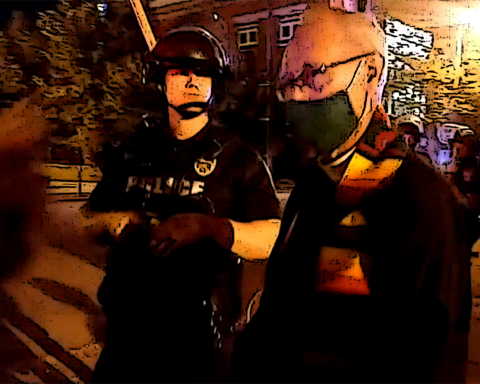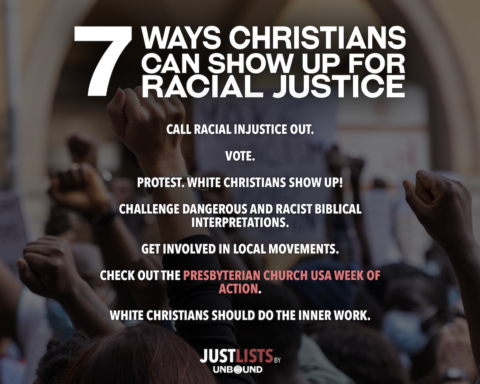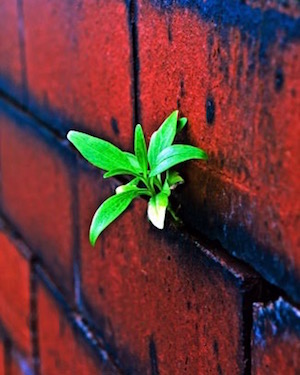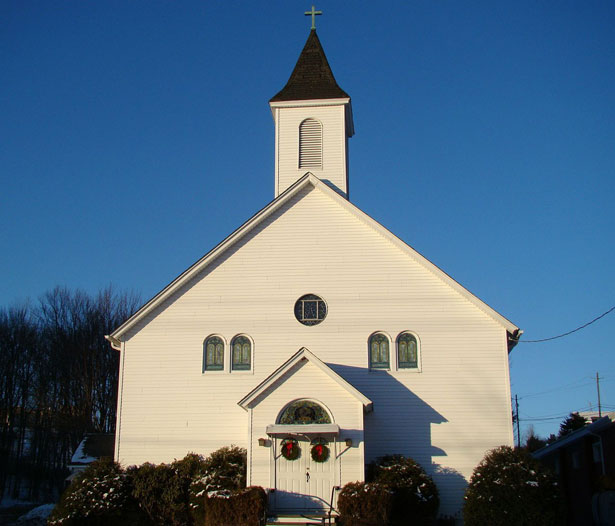Dog-Whistling and Sin-Talk

It happened most recently on a family trip to a museum.
This trip was particularly special because the museum had recently accepted my wife’s fiber art piece into one of its shows. I sat outside the gallery on a balcony that overlooked the small theater that was located on its first floor. The balcony was not roomy, but there were a few places to sit, and after walking the entire gallery, sitting in the luxury chair was a welcome reward. Next to me also, finding solace in the luxury chairs, was an older white man. We chatted briefly, mostly about how comfortable the chairs were, before he stood up and declared loudly that he was going to the bathroom but did not want to give up his very comfortable seat. In jest – at least I thought – the man looked at me and said, “Hold my seat, don’t let anybody sit here.” I laughed it off, acknowledging that the very comfortable (albeit very limited) seating was indeed a godsend. However, the mood changed when he said the following: “Well if someone goes to take my seat, I will get you to handle them because you look like you could beat them up.”
Now, it is noteworthy to mention that I am an African American man, 6’3” and about 214 pounds. Immediately after the man said this, I felt cold shock, followed by a toxic mix of disappointment, anger, and disrespect. Several thoughts came to mind all at once. I thought to myself: “Maybe he meant no harm. I might be too sensitive, reading too much into it.” At the same time, I also thought “Well perhaps he is somewhat threatened by or uncomfortable with my presence in this all-white venue. So uncomfortable that he was ‘putting me in my place’ so to speak, making it clear that I was an interloper and did not belong there.”
___________________________________________
My being black in white space made me an “intruder” and my fellow patron’s act of putting me in my place was designed to “protect” that white space.
___________________________________________
This idea of the black body as interloper in white space is profoundly underscored in theologian Kelly Brown Douglas’ book Stand Your Ground: Black Bodies and the Justice of God. According to Douglas, my being black in white space made me an “intruder” [1], and my fellow patron’s act of putting me in my place was designed to “protect” that white space. I’ve gone through a whole range of thoughts and raw emotions reflecting on this experience, but in that moment, what bothered me most was that in this man’s eyes, it was impossible to imagine that I was a proud husband or fellow patron of the arts. Based on the looks of me, I was a ruffian – a thug – at best one that he could put to use. Our family friend who was sitting on the couch across from me looked at me after he left and said “If he only knew that you are a Presbyterian minister.”
 I thought of Freddy Gray, Eric Garner, Michael Brown and Tamir Rice – black men and boys killed at the hands of white police officers. I thought of how I and many African American males must accept, with limited opportunity to contest, what it means to be perceived as big, black, menacing and “demonic.” [2] This seemingly insignificant, possibly harmless, incident in that museum profoundly reminded me that I am Gray, Garner, Brown, Rice and others who are criminalized because of racist perceptions that equate blackness and maleness with danger and harm in American society.
I thought of Freddy Gray, Eric Garner, Michael Brown and Tamir Rice – black men and boys killed at the hands of white police officers. I thought of how I and many African American males must accept, with limited opportunity to contest, what it means to be perceived as big, black, menacing and “demonic.” [2] This seemingly insignificant, possibly harmless, incident in that museum profoundly reminded me that I am Gray, Garner, Brown, Rice and others who are criminalized because of racist perceptions that equate blackness and maleness with danger and harm in American society.
This is certainly not the first time that I have been told that I look like a thug, or that someone has intimated/implied it. In my second year of seminary, I was pulled over at gunpoint by a white police officer (state trooper to be exact) who placed his service revolver up against my temple, pulled me out of the car, slammed me on the trunk. He moved the revolver down to my back, pushed it into my spine, and kicked my legs open, making the suggestive assumption “You know what to do” (which I found interesting because I had never been arrested).
___________________________________________
The reality of black criminalization in society has theological implications as well as social ones. It implies that Blackness is not only dangerous or suspicious, but sinful.
___________________________________________
The reason for this man’s violent display of power over me? My friend in the car (who was white) and I “fit the description” of some car thieves in the area. One can only imagine the disbelief and shock on the face of the trooper and the growing number of officers that arrived on the scene when they found out that we were seminary students.
 The reality of black criminalization in society has theological implications as well as social ones. It implies that Blackness is not only dangerous or suspicious, but sinful. I first began to realize this as a teenager observing a children’s sermon in a then-predominately white Presbyterian Church. A white friend from high school had invited me to attend the Presbyterian church in which he worshiped. Predominately white and on the “other side” of town, my visit made my family a little uncomfortable, particularly the fact that I would be going there alone. During one of my many visits to this church in what would eventually become my denominational home, a well-meaning Sunday school teacher presented the “color game” to the children gathered for worship. Holding up a Bible and several sheets of colored construction paper, she went through each sheet, talking about the color and its theological significance.
The reality of black criminalization in society has theological implications as well as social ones. It implies that Blackness is not only dangerous or suspicious, but sinful. I first began to realize this as a teenager observing a children’s sermon in a then-predominately white Presbyterian Church. A white friend from high school had invited me to attend the Presbyterian church in which he worshiped. Predominately white and on the “other side” of town, my visit made my family a little uncomfortable, particularly the fact that I would be going there alone. During one of my many visits to this church in what would eventually become my denominational home, a well-meaning Sunday school teacher presented the “color game” to the children gathered for worship. Holding up a Bible and several sheets of colored construction paper, she went through each sheet, talking about the color and its theological significance.
It was there in children’s worship that her young Sunday school class learned that White symbolized goodness, purity, and “God’s light.” Red symbolized the blood of Christ, and illustrated the sacrifice Jesus made for us. Black symbolized darkness, evil, and sin. To hear, in church, that “Black is evil!” “Black is sinful!” without any further explanation or exemption of persons made me feel embarrassed and ashamed. Though I may not have been able at the time to name it in as many words, it was then that I began to realize the importance of being conscious of both our symbols and the things we say and do in church and the context of worship. Here, I am reminded by theologian Stephen Ray who in his incredible book Do No Harm on the subject of sin talk states the following:
The desolating power of the name ‘sinner’ is one that should be apparent to anyone even vaguely familiar with Christian history. People have been ghettoized, exiled, and killed because they have been designated sinners. Whether it be flogging, dunking, quartering, or burning at the stake, no punishment has been too severe by “good church folk” when it is visited upon sinners in their midsts. [3]
I think of Emmett Till whose “sin” was being black and male. My father told me the story of Emmett Till when I was 13 years old, and he did not spare the details. I believe that this was his way of protecting me, using that story to keep me self-aware when I am in situations where I am one of the only African Americans present. In the case of Travon Martin, Tamir Rice, and Michael Brown, it was not “dunking” or “burning,” but shooting.
 Years later, again in church but this time as the pastor, I encountered this same sense of criminalization when I overheard someone in the church saying, “Look at him, he doesn’t look like a pastor; he looks like a thug!”
Years later, again in church but this time as the pastor, I encountered this same sense of criminalization when I overheard someone in the church saying, “Look at him, he doesn’t look like a pastor; he looks like a thug!”
It goes without saying that having an image like this grafted on me becomes a barrier in ministry. The image of the “thug” evokes such fear and mistrust that in some situations, I actually felt inclined to wear a collar to reinforce my pastoral identity (which of course this has its own set of negative stereotypes…). Most importantly, when individuals project images onto people of color based solely on our race (in this case my gender as well), establishing trust and pastoral relationships becomes increasingly difficult. “Thugs”, after all, are not inclined to possess love, compassion, or any of the skills needed to administer pastoral care.
Scores of articles could be written about the word “thug” and its origins. Today, the use of the word “thug” in mainstream parlance has come to connote an archetype of arrogant, nihilistic, and dangerously violent African American men. With its usage becoming even more popular in the mainstream, this particular use has racist connotations intended to dehumanize, essentialize, and criminalize Black men. With controversies swirling around the use of the word in reference to everything from flashy African American sports figures to rioters in Baltimore to slain black youth like Trayvon Martin, some have even argued that thug may have possibly become the new “n” word.
___________________________________________
To hear, in church, that “Black is evil!” “Black is sinful!” without any further explanation or exemption of persons made me feel embarrassed and ashamed.
___________________________________________
In my many years working with African American teenagers, hearing myself and the students with whom I worked called “thugs” by law enforcement, business owners, and school teachers became commonplace. However, I am particularly troubled when I hear church members using this language of condemnation. These young people need the church’s care and nurture; they are the very young people we say we want so badly to come back to our churches! But being objectified and labeled like this time and time again. Furthermore, to hear this language used without critique from the Body of Christ becomes downright harmful. It compounds the hurt, ignores grace, and fails to acknowledge the imago Dei in in the person standing in front of us. No wonder these kids leave the church; no wonder they associate it with judgment and contempt. The place where, as that famous hymn goes, we are called to “break bread together on our knees” has for them become a place of judgment, stereotyping, and shaming.

The concept of the “thug” has become a convenient way to code racially-charged language and ideas. This coded language is part of a concept known as “dog whistling” – a term that has its origins in the worlds of polling and politics. Dog whistling, according to author and historian Ian Haney Lopez, is an apt metaphor because analogous to an actual dog whistle, this coded language is “on one level… silent and seems race neutral, on another it also has a shrill blast and can be heard by certain people.” [4] Dog-whistling and coding have become integral characteristics of postmodern racism.
Examples of dog-whistling abound. Take, for example “illegal immigrant” or “gang member”. At their most literal level they are not explicitly racist terms (that “illegal immigrant” could be a white person from Britain!), but they carry connotations that allow those who use them to surreptitiously speak a coded racist or demeaning statement about an individual or entire groups of people, while at the same time using the ambiguous character of the terms to deny doing so. At a recent anti-racism workshop I was leading, I asked the group to describe to me what came to mind when I said “gang member.” The responses did not conjure images of white supremacists. For the participants, the terms automatically evoked the images of black and brown people.
___________________________________________
Those who nailed Jesus to the cross that day failed to see Christ in him. In whom do we fail to see Christ?
___________________________________________
It is important for those of us in the church to remember that we are not immune to participating in racist sin-talk, harmful coded language, or dog-whistling. The language and symbols that may be second nature to some of us can isolate others in ways we may not even know. Particularly when we are part of the majority in terms of race, class, and power.
 I am reminded of Jesus’ words from the cross in Luke 23:34: “Forgive them, for they know not what they are doing.” Those who nailed Jesus to the cross that day failed to see Christ in him. In whom do we fail to see Christ – in our churches, schools, places of work, even just walking down the street? How often do we see a “thug”, an “illegal”, a “welfare queen”, a “gang member” – or any other coded racial identity – where Jesus says “This [person] is my body, and this is my blood”?
I am reminded of Jesus’ words from the cross in Luke 23:34: “Forgive them, for they know not what they are doing.” Those who nailed Jesus to the cross that day failed to see Christ in him. In whom do we fail to see Christ – in our churches, schools, places of work, even just walking down the street? How often do we see a “thug”, an “illegal”, a “welfare queen”, a “gang member” – or any other coded racial identity – where Jesus says “This [person] is my body, and this is my blood”?
Racism has often been called, appropriately, America’s original sin. Sin, even in its “enlightened”, “postmodern” form, is still sin. How do we call that out in our own contexts? How do you be the voice in the body that speaks up?
_______________________________________________________________
[1] Douglas, Kelly Brown, Stand Your Ground: Black Bodies and the Justice of God. Orbis Press (2015) p.66 Kindle Edition.
[2] Darren Wilson, the officer who shot and killed Michael Brown in Ferguson, Missouri used this word to describe Brown.
[3] Ray Jr., Stephen G. Do No Harm: Social Sin and Christian Responsibility, Fortress Press (2003) p.x
[4] Moyers & Company interview with Ian Haney López on the Dog Whistle Politics of Race (Part One). February 28, 2014. http://billmoyers.com/episode/ian-haney-lopez-on-the-dog-whistle-politics-of-race/
*****
AUTHOR BIO: The Rev. Alonzo Johnson is the new Mission Associate with the Presbyterian Peacemaking Program. Alonzo has concluded his service as the pastor/head of staff of Oak Lane Presbyterian Church in Philadelphia, PA. He is a graduate of Louisville Presbyterian Theological Seminary (LPTS) and is currently a candidate for his Doctor of Ministry degree at LPTS. He is passionate about peacemaking and social justice issues and has rich experience in urban ministry with a focus on mentoring youth in the arts.
Read more articles in this issue Call to Confession: Race, White Privilege and the Church!






Unbound Social